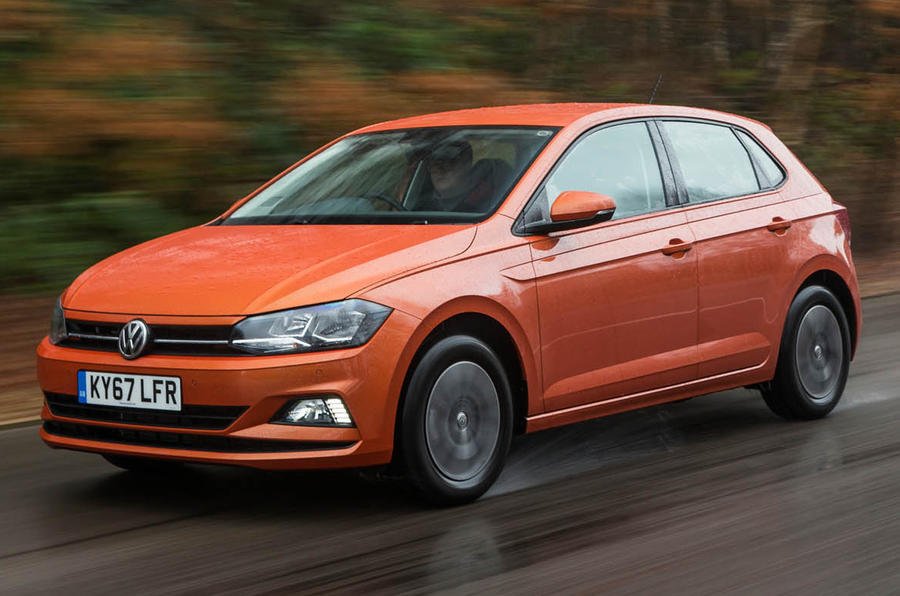Each new generation of Volkswagen Polo manages to feel more grown up than the one it replaces, and so it is with this sixth and current one, launched in 2018. However, it is also more attractively styled than its predecessors – an admission, perhaps, that nowadays looks matter as much as substance.
The Polo sits on a variant of the Volkswagen Group's multi-talented MQB architecture, and as a result the car rides comfortably and handles adroitly. It's also bigger and roomier than ever before. It would seem perverse to offer a three-door version with all this new-found space, so the Polo is only available with five doors. And it isn't alone, since most car makers no longer offer three-door versions of their smaller models.
So this bigger, roomier, better to drive and easier to live with Polo is starting to sound like one very amenable little car, except its petrol engines can trip you up. The problem lies with the three least powerful ones. They're non-turbocharged three-pots making a trifling 64bhp, 74bhp and then 79bhp (this last one replaced the 74bhp unit). They're a bit cheaper to insure but you really want to dig a little deeper for one of the turbocharged TSIs, producing 94bhp or 114bhp.
Our pick is the first one, the 1.0 TSI 95. Like the non-turbo engines, it has a five-speed gearbox (whereas the 1.0 TSI 115 has six speeds), but it's flexible enough that you won't miss the extra cog. The remaining petrol engine is the 197bhp 2.0-litre in the Polo GTI hot hatch. There's just one diesel. From launch, the 1.6-litre unit produced 79bhp but was replaced later on by one with 94bhp. It offers few benefits over the petrols and, as Volkswagen itself predicted, few have been sold. For the record, prices start at around £10,000 for a 2018-reg 1.6 TDI 80 SE with 50,000 miles, or about the same price as the equivalent 1.0 TSI 95 SE.
The Polo's mature character is mirrored in its grown-up level of standard kit. Automatic emergency braking and air conditioning are standard even on the cheapest trim, badged S. The range continues through SE (our favourite and the biggest seller) and more luxurious SEL (parking sensors all-round, a sat-nav and automatic windscreen wipers but only available with the 1.0 TSI 115 engine) to sporty R-Line (bodykit and sports seats). These last two aren't big sellers and are pricier, too. For example, a 2018-reg Polo 1.0 TSI 115 SEL with 33,000 miles costs £12,300, or about the same as a same-age, same-mileage Golf 1.0 TSI 110 SE. We know which we'd buy.
Polos are popular with urban drivers, so expect the odd parking scrape and dinged wheel. Otherwise, they're tough little things that really do feel a cut above rivals such as the Ford Fiesta and Vauxhall Corsa. The car is reasonably reliable, too.
Need to know
Entry-level S trim won’t connect a smartphone to the infotainment without the App Connect option.
Seven-speed dual-clutch auto is available with the 1.0 TSI 95.
Rare diesel suits high-mileage drivers but is noisy.
There have been a few recalls concerning seatbelt buckles, the handbrake and the brake servo.
The 94bhp and 114bhp turbo petrols are more frugal than non-turbo 64bhp and 74bhp engines.
All versions have automatic emergency braking that reduces the risk of rear-ending someone and helps to keep insurance down.
R-Line is a GTI lookalike without the performance or the price tag.
Our pick
Polo 1.0 TSI 95: This mid-range three-cylinder petrol engine is refined, flexible and economical (we got 57.1mpg on our road test touring route). There are plenty to choose from at prices from around £10,000 for a 2018-reg.
Wild card
Polo GTI: The first Polo GTI to be worthy of the badge combines strong performance with everyday usability. It’s quite rare and oozes premium appeal; it’s just a shame that it’s pricey and automatic-only.
Ones we found
2018 Volkswagen Polo 1.0 65 SE, 70,000 miles, £7950
2019 Volkswagen Polo 1.0 TSI 95 SE, 24,000 miles, £11,195
2020 Volkswagen Polo 1.0 Evo 80 SE, 6000 miles, £13,000
2021 Volkswagen Polo 1.0 TSI 95 Match, 3000 miles, £15,250

